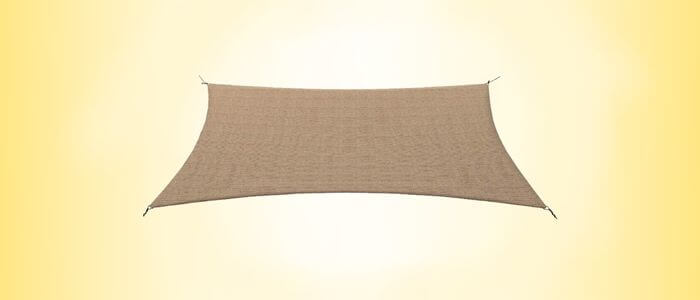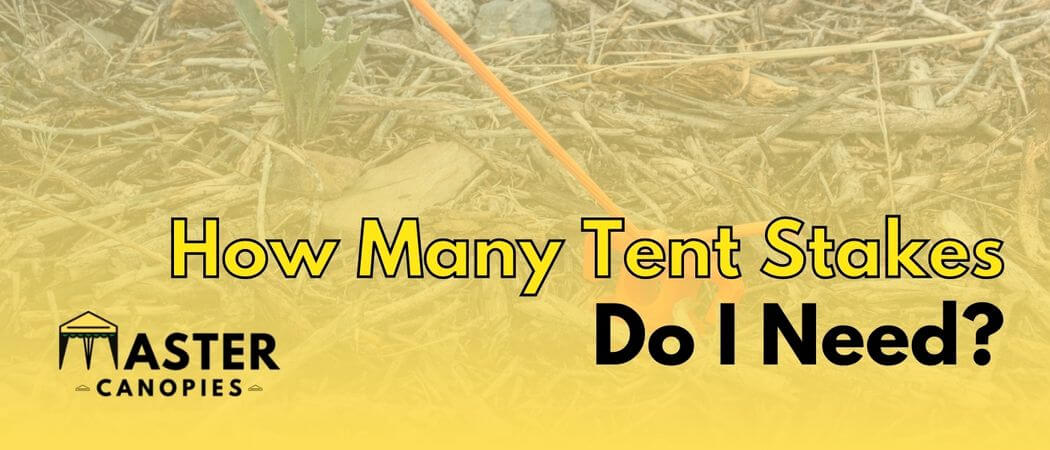
How to Fill Canopy Weight Bags Properly
How to Fill Canopy Weight Bags to Hold Down Your Canopy Published August 8th, 2022 by Allen Campbell While camping, it is necessary to take
Published August 12th, 2022 by Allen Campbell

If you’re considering taking your camping game up a notch, then learning how to set up a tarp canopy might be the next step for you. Tarp canopies are versatile, affordable, and easy to set up – making them the perfect option for anyone looking for an extra level of protection from the weather.
In this post, you will learn to set up a tarp canopy quickly and easily. I’ll also give you some tips on how to make the most of your tarp canopy so that you can enjoy your time outdoors even more. So let’s get started!
A lot of gear is required to set up a tarp, and it can be confusing to know what you need. In order to set up a tarp effectively, you will require some basic camping supplies. Here is a list of the essentials you will need to get started.

In order to purchase the tarp, you need to know the dimensions of the picnic table. It is because the tarp should be larger than the table to protect people and things under it from the sun and rain.
The standard size of a picnic table is 8 feet long by 6 wide, so you should buy an extra large tarp that is at least 12×16 inches. In that way, you can be sure that everyone has plenty of space to sit comfortably without being too close.
Similarly, if you are setting up a tarp over the tent, make sure that your tarp is larger than the tent’s footprint. That is to say; the tarp should extend beyond the edges of the tent to provide extra protection from the elements.
I would suggest you buy a tarp that is made of waterproof and lightweight material. Polyethene fabric is affordable compared to canvas material. You can purchase them at your local hardware store or online.
You will need two rope sets to set up your tarp for different lengths. The first rope will be your primary support and should be at least 100 feet (30 meters) long. Also, a 3/16-inch nylon static line is ideal for this purpose.
The second rope will be used to tie down the corners of your tarp and should be about 65 feet (20 meters) long. This rope can be made out of thinner and stronger material, such as reflective paracord with a 1.8 mm thickness.
After purchasing this rope, you need to cut its length into four parts, each measuring 5 meters (or 16.4 feet).
You will also need to stake down the tent corners with tough stakes. Add 4 stakes to your equipment list. They will be used to keep the tarp in place and protect against any wind gusts.
If you ever purchased the tent in the past, check if the supplied stakes are still usable. If not, then purchase some heavy-duty ones from the market.
To ensure that you have plenty of space to move around in your tarp, I recommend using sticks that are at least one foot longer than your height. You can find these sticks easily by looking for them in the woodlands.
Also, ensure the sticks are not too thin, as they may break under tension when securing the tarp.
The knife is important for shaping sticks so that their tips can fit into holes in the corners of tarps. Also, using a knife will help to ensure that the tarp is equally attached to all parts of the campsite.
This part is very important, so you must ensure you do everything properly. First, explore the site and find two sturdy trees to use. Then, you can position the picnic table between these trees for the best results. Now it’s time to take the primary rope and tie it off at a high point on one of the upper branches.
Tie the other end of the rope to another tree to keep it in place. Tight it as much as possible to ensure enough headroom under the tarp so you don’t have to worry about getting wet. This will create a waterproof and sturdy shelter you can use for your picnic.
The next step is to add the tarp over the primary rope and make sure it is positioned correctly. This will ensure that you have equal space under the tarp. Then, attach four secondary ropes to each corner of the tarp.
After attaching the secondary ropes with tarp ends, you must stake each rope out. Drive the stakes into the ground firmly, using a rock to hammer them in if necessary. Following these ideas will help ensure that your tarp stays in place during windy conditions. You will see the “A” shape created by the tarp and ropes.
Use a knife to remove any excess material from the tips of the sticks, so they fit snugly into the grommets on the tent. This will ensure that tall people can easily enter and exit the tent without any issues.
Now, lift up each corner of the tarp and place a stick into the grommet. Repeat this for the remaining corners of the tarp. After that, make the stick stand up by pushing it into the ground. Tight the secondary ropes to ensure the tent is secure to the ground.
If the camping area has plenty of trees, it might be best to tie the ropes directly onto them. Just make sure that both ends have higher ropes than what is on ground level so that any rainwater will run down one side instead of pooling in the middle of the tarp.
Consider the size of the tarp. You’ll want to ensure it’s large enough to cover your entire campsite but not so large that it’s difficult to manage.
Don’t set your tarp up too close to the fire; it could melt and create holes for water to seep through. Even small flames could cause big problems if they catch your tarp on fire. Make sure you set up your tarp safely from any heat source.
Now that you know how to set up a tarp canopy, it’s time to get out there and enjoy the great outdoors!
These tarps are perfect for any occasion, whether you’re looking to shade yourself from the sun at a music festival or keep your family dry during a sudden downpour. With just a little practice, you’ll be able to set yours up in no time.
Write down all the pieces of equipment: from the primary rope to the ground stakes, that you’ll need to set up a tarp canopy, and take important considerations into account before doing so. This will ensure that you have everything you need and don’t forget any vital steps.

Allen is a full time writer at Mastercanopies.com and enjoys traveling around the United States and exploring nature. He enjoys writing about canopies as he believes they are extremely crucial in having a successful camping trip whether it be a trip to the beach, mountains, or the open plains.

How to Fill Canopy Weight Bags to Hold Down Your Canopy Published August 8th, 2022 by Allen Campbell While camping, it is necessary to take

What is a Pop-Up Canopy Tent? Everything to Know About Pop-Up Canopy Tents Published August 9th, 2022 by Allen Campbell Pop Up Canopy is often

Do You Need a Permit to Setup a Camping Tent? Rules and Regulations Published July 26th, 2022 by Allen Campbell There are a lot of

How Many Tent Stakes Do You Need to Secure Your Tent? Published July 26th, 2022 by Allen Campbell As you prepare for your next camping

Best Custom Sports Canopy Tent Companies Published June 19th, 2022 by Allen Campbell In today’s market, there are many various styles of tents available for

Best Heavy Duty 20×30 Canopy Tents for Large Gatherings Published June 19th, 2022 by Allen Campbell If you are planning to host a large gathering,

What Size Canopy Tent is Best for 50 Guests? – Ideal Canopy Tent Sizes Published June 19th, 2022 by Allen Campbell Choosing the right size

How Long Do Pop-Up Canopy Tents Last? Published June 14th, 2022 by Allen Campbell Pop-up canopies are convenient but not very sturdy. They can’t handle

How Do Pop-Up Canopy Tents Work? Published June 14th, 2022 by Allen Campbell Do you like the suggestion of camping but despise the hassle of

Master Canopies is here to bring you the best canopies for the outdoors so that you can enjoy the fresh air without the gleaming and burning light of the sun.

Master Canopies is here to bring you the best canopies for the outdoors so that you can enjoy the fresh air without the gleaming and burning light of the sun. As an Amazon Associate, we earn from qualifying purchases.